|
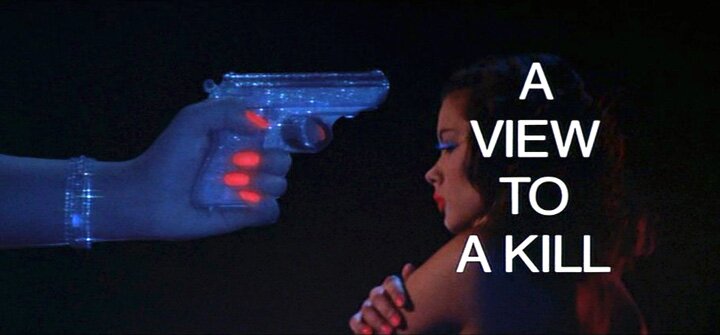 BlogalongaBond. One Bond film a month until Skyfall arrives in November. BlogalongaBond. One Bond film a month until Skyfall arrives in November.
WHY WON’T ROGER MOORE DIE? That was the question that haunted me throughout the last six Bond films. No matter what people threw at him - coffins, snakes, octopodes – he just refused to go away.
In A View to a Kill, a Bond film so bad that even Roger himself didn’t like it, the wrinkled old codge somehow survived the onslaught of horses, a machine gun AND a 5'10" black woman.
That’s when the answer hits you: it's not because he’s invincible or amazing (or because his stuntman does all the work); he won't die because he’s already dead. Underneath that wig, he probably has less hair than Bruce Willis.
He looks more like a shrivelled onion now than a secret agent. When he sleeps with a girl at the end of the opening sequence, it’s not just awkward, it’s psychologically traumatic. (Either that girl has one hell of an Elektra complex, or she’s being paid a LOT of money.)
So why bother with A View to a Kill at all? Certainly not for Christopher Walken’s dreadful villain, who spends his time shooting people and wearing sunglasses (he’s German AND French, the script explains). Not the clunky Silicon Valley storyline, desperate to appear up to date with the cool kids. Not even John Steed’s appearance as a jovial sidekick, which begs for a spin-off series, or Grace Jones’ intimidating May Day can make things fun.
The answer is, of course, the inimitable John Barry.
The film may be a pile of gubbins, but with his tenth soundtrack, Barry’s rarely been better. How did the musical maestro do it? Well, this pamphlet stuck inside my copy of the A View to Kill soundtrack has a few answers…
How to Write a Bond Score
Start with a good song
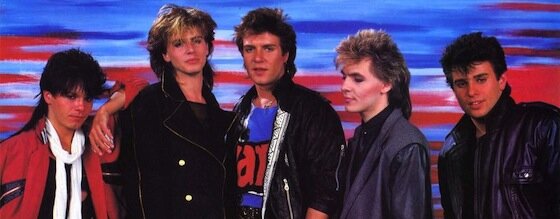
As anyone who’s read the guide to writing a Bond theme song knows, it’s not really that hard to do. Even if you’re shackled to one of the worst Bond movies, you can still come up with one of the best Bond themes of all time. So what if you don’t get on with the pop group that Cubby Broccoli’s brought on board? John Taylor went behind Barry’s back to get Duran Duran the gig and he turned out to be the composer’s biggest fan. At first, A View to a Kill's synthed-up title number may not sound like a Bond theme, but Barry’s advice was noticed more than you think; the stabs of brass and those up and down chords gently hark back to Monty Norman’s theme, leaving it ripe for Barry’s signature symphonic treatment.
Turn the tune into an orchestral Meisterwork
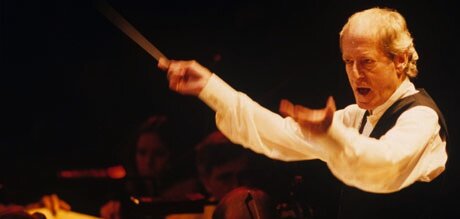
Take out the singing, shove in a full orchestra and that Bond feel will become all the more apparent. Arranging symphonic versions of pop songs is the kind of thing John Barry did in his sleep for years, inserting his trademark rising and falling Bond motif underneath the melodic main melody. Just remember: if the song sounds good, arrange it as often as possible.
Remember Monty
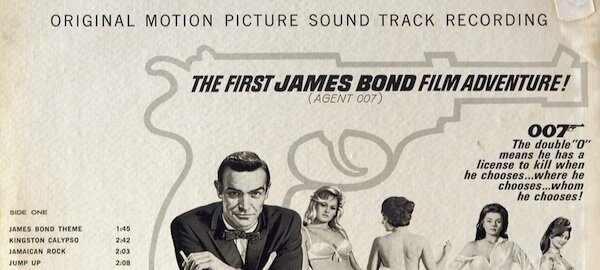
The only thing you should be using as much as your title song is Monty Norman’s iconic ditty. But don’t go crazy. The secret is knowing when to deploy it; strike up the theme when 007 does something impressive, like refusing to die (WHY WON'T ROGER MOORE DIE?) or driving half a car through Paris. No one wants to hear the James Bond music while he’s walking around a hotel room doing nothing. As From Russia with Love proved, that’s just embarrassing.
Go global
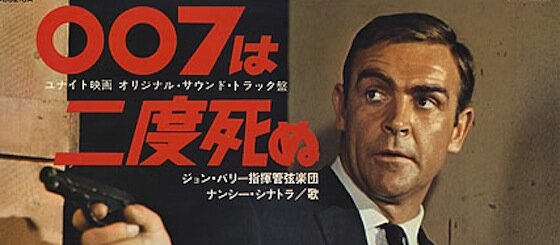
As well as Monty’s musical legacy, you also need to keep up with Bond’s shifting international style. If you can’t play “spot the country” with the soundtrack, it’s not a Bond score, so make sure you vary your instruments to suit Bond’s surroundings. A quick listen to Octopussy’s Bombay mix (ho ho ho) of flutes or You Only Live Twice’s sitar stylings and you get the idea. If you need some more inspiration, try hooking up with instrumentation genius Nic Raine. He’ll sort you right out.
Syncopation, syncopation, syncopation

No-one likes boring old straight notes, so whenever you can, move things off the beat. Listen to From Russia with Love’s score (particularly The Golden Horn – one of the pinnacles of Bond composition outside of OHMSS) to get an idea of how to layer syncopated rhythms. You can have at least four contrapuntal patterns playing over the top of each other. Ride cymbals, double basses and vibraphones are your friends and will help with that big band feel. Michael Kamen's military approach did a similar thing with snare drums for License to Kill, but if you want to get a real sense of the bluesy origins of Barry's style, the composer's jazz roots are superbly drawn out by a cover of The Golden Horn by Count Basie. I cannot recommend his 1966 album Basie Meets Bond enough:
But hey, if all that seems too much, just try and hit the second and fourth beats of the bar with some low notes and you’ll at least remind everyone of old Monty.
Break out the brass

Once you’ve got your pizzicato on in the background, it’s time to break out the big guns. Solid string chords and percussion are the heart of a piece, but it takes a loud bit of brass to carry your main action theme. Think loud, bold and memorable. One of the best examples is Barry’s A View to a Kill fandare, based on Duran Duran’s song, designed to accompany a shot of a burning building. “Dance into the fire!” blaze the trumpets and horns, only for EMI to leave it off the official soundtrack CD. Silly EMI. But thanks to Nic Raine’s own album (Bond Back in Action 2, released in 2000), you can now listen to it at home – and steal all of its ideas.
Be romantic
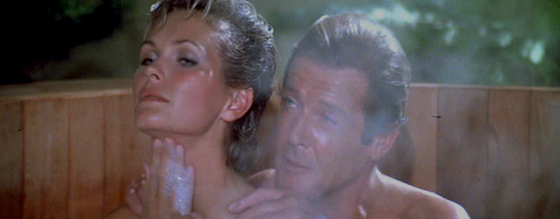
Horns are great, but you know what’s better? Flutes. The unsung heroes of Bond music, they’re quiet, expressive and – most importantly – romantic. And all Bond films need a decent love theme. Since Moonraker and Octopussy (and all the way back to before You Only Live Twice), flute-based arrangements of Bond title songs have whispered sweet nothings while Bond makes sexy time. Why not compliment that with some subtle string arpeggios, or – if you’re feeling very modern – a bit of piano?
Think sad thoughts
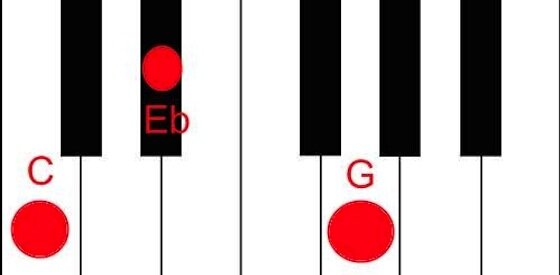
Soppy music is great for loved-up idiots, but this is spying, baby. Death. Cars. Explosions. It’s not a happy job. So stick to some good sad keys. C minor. G minor. Any minor, really. And even if you’re in a major key, put serious weight on chromatic notes that don’t fit the tonic chord. The kind of thing you wouldn’t hear in Gabriel’s Oboe. Even the fourth note of the main Bond theme is a jarring major seventh, again highlighting how steeped in jazz 007's music is.
David Arnold nailed all of this brilliantly with Casino Royale‘s anti-Monty score, using his own minor trio to cue up the main theme of African Rundown (around the 47 second mark). Despite the syncopation, vibraphones, contrasting drums and brass, those three notes sounded brand new – but they were, in fact, the very same ones from Vic Flick’s familiar James Bond riff, just slightly inverted. Oh, Arnold. You so tricksy.
Switch on the electric

Electronic musical contraptions are everywhere these days. You might as well use them. Yes, brass and strings are important, but you need to move with the times. In fact, if you’re sparing in your synth usage, it won’t even date your score. A View to a Kill is full of it, but it feels as modern as The Word Is Not Enough and as timeless as Goldfinger. Just don’t go too far, or you’ll end up like Eric Serra’s Goldeneye score. No one wants that.
Repeat your riffs
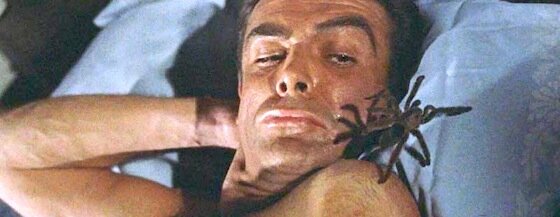
Don’t forget that your score is designed to accompany images. A lot of time you might just be waiting for something to happen. The simplest solution? Come up with a riff based on what’s on-screen. If it’s a train, imitate the regular bursts of a steam engine. If Bond’s up in the air, freewheeling electric guitars can convey vertigo. If it’s a spider crawling down 007’s back, a few descending scales should do the trick.
When you’ve got your riff worked out, keep repeating it. And repeating it. And repeating it. In Thunderball, Barry frequently goes for over a minute with just one riff on a loop. And that's a riff he'd already repeated 50 million times in From Russia with Love. It worked then; it’ll work now.
Aim low

If you’re trying to build up tension (particularly for your villain), start low. Double basses are good. Cellos are even better. Long, slow notes as your score escalates into the main tune. That’s how you make even Roger Moore seem exciting.
Always keep in 4/4
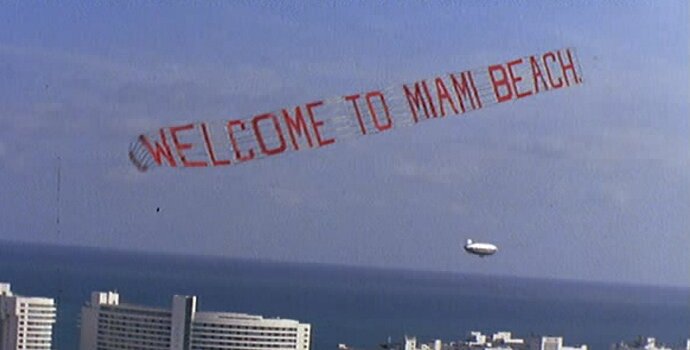
Much like the title songs, you don’t want to scare people with really adventurous stuff, so stick with the traditional four beats in a bar. Aside from Tomorrow Never Dies (the only non-4/4 Bond song) and a few brief passages, such as the start of African Rundown, there’s only been one full piece of Bond music (to my limited knowledge) entirely in another time signature: Goldfinger's distinctive Into Miami, which swings in 6/8 with all the cool of 1960s America – Count Basie never needed to cover this one. So why not keep it that way? A quick re-listen to OHMSS will remind you just how much a creative composer can do with that boring old time signature.
Copy John Barry
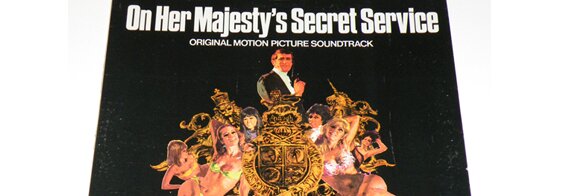
Just as you recycle the title song, don’t be afraid to copy John Barry. After all, he defined the sound of the series. He was so integral to the tone of the franchise, even he copied himself in search of good motifs. Thunderball and From Russia with Love are just two of the Connery outings with identical tracks for set pieces, but the best example of how to plagiarise your own work remains Roger Moore's last movie. Taking OHMSS (easily the best action theme in the series) and transforming it into Snow Job (and a few others), A View to a Kill's soundtrack gives the production a thrilling energy completely at odds with its boring naffness:
And there you have it. Follow these steps and you’ll have yourself a cracking 007 score in no time - for a discussion about whether Thomas Newman is the right guy to follow these instructions, head this way. In short, I'm sure Thomas will do a decent job. Let's just hope they don't ruin it in post-production; if you want real proof why A View to a Kill fails so miserably as a Bond movie, re-watch the opening ski chase. When they intentionally dub The Beach Boys’ California Girls (a cover of the song, no less) over the top of John Barry? That’s the mark of a franchise that's forgotten its own identity.
BlogalongaBond will return next month in The Living Daylights - John Barry’s final score. (Thank goodness Michael Kamen is about to pick up the baton.) To read more rambling soundtrack thoughts about Thomas Newman's Bond composer credn For more BlongalongaBondage, head this way.
|




 BlogalongaBond.
BlogalongaBond. 











